Laptop Mag Verdict
The Pixel 6 Pro may be one of the best smartphones of the year, but whether Google can win over buyers remains unclear.
Pros
- +
Excellent software support
- +
Fantastic and versatile camera system
- +
Unique software features
- +
Affordably priced
- +
Bright 120Hz display
Cons
- -
Potentially middling battery life
- -
Unproven processor
- -
No charger in the box
Why you can trust Laptop Mag
Last year, I wrote that the Pixel 5 made me wish Google made a flagship smartphone. If I knew I was getting my wish, I might have asked for some Bitcoin. Alas, here I am with a flagship Pixel, and I’ll take it.
Google’s phone efforts have had their bright spots over the years with consistently excellent camera performance and some clever software features, but the wheels came off last year. The Pixel 5 and Pixel 4a 5G were each compelling in their own right, but Google's pricing was confusing and the hardware felt uninspiring.
At first, it seemed Google had lost the thread on its phone division. But it quickly became clear that the company had made long-term hardware bets that didn’t pay off in time and its 2020 lineup was essentially a bridge to get into 2021.
Enter the Pixel 6 Pro with its new custom Tensor chip, a dramatically upgraded triple camera array and a 120Hz LTPO display that is the largest that we’ve ever seen on a Pixel. This is the flagship Pixel I asked for, but does it live up to my expectations?
Pixel 6 Pro price and availability
While the Pixel 6 is the strongest value proposition, the Pixel 6 Pro is the return of a flagship Pixel as proven by its starting price of $899 when configured with 12GB of RAM and 128GB of storage. Additional storage tiers are available at $999 and $1,099 for 256GB or 512GB, respectively.
Despite the high-end feature set and dramatic price increase over the Pixel 6, at $899, the Pixel 6 Pro maintains Google’s value messaging as it undercuts $999 competitors like the iPhone 13 Pro or Galaxy S21 Plus.
In the U.S., buyers can also opt to get the Pixel 6 Pro with the new Pixel Pass subscription which bundles several popular Google services with what amounts to a new Pixel every two years. The services include YouTube Premium, YouTube Music Premium, Google Play Pass, and a 200GB Google One storage plan. This is available either through Google Fi or the Google Store.
Sign up to receive The Snapshot, a free special dispatch from Laptop Mag, in your inbox.
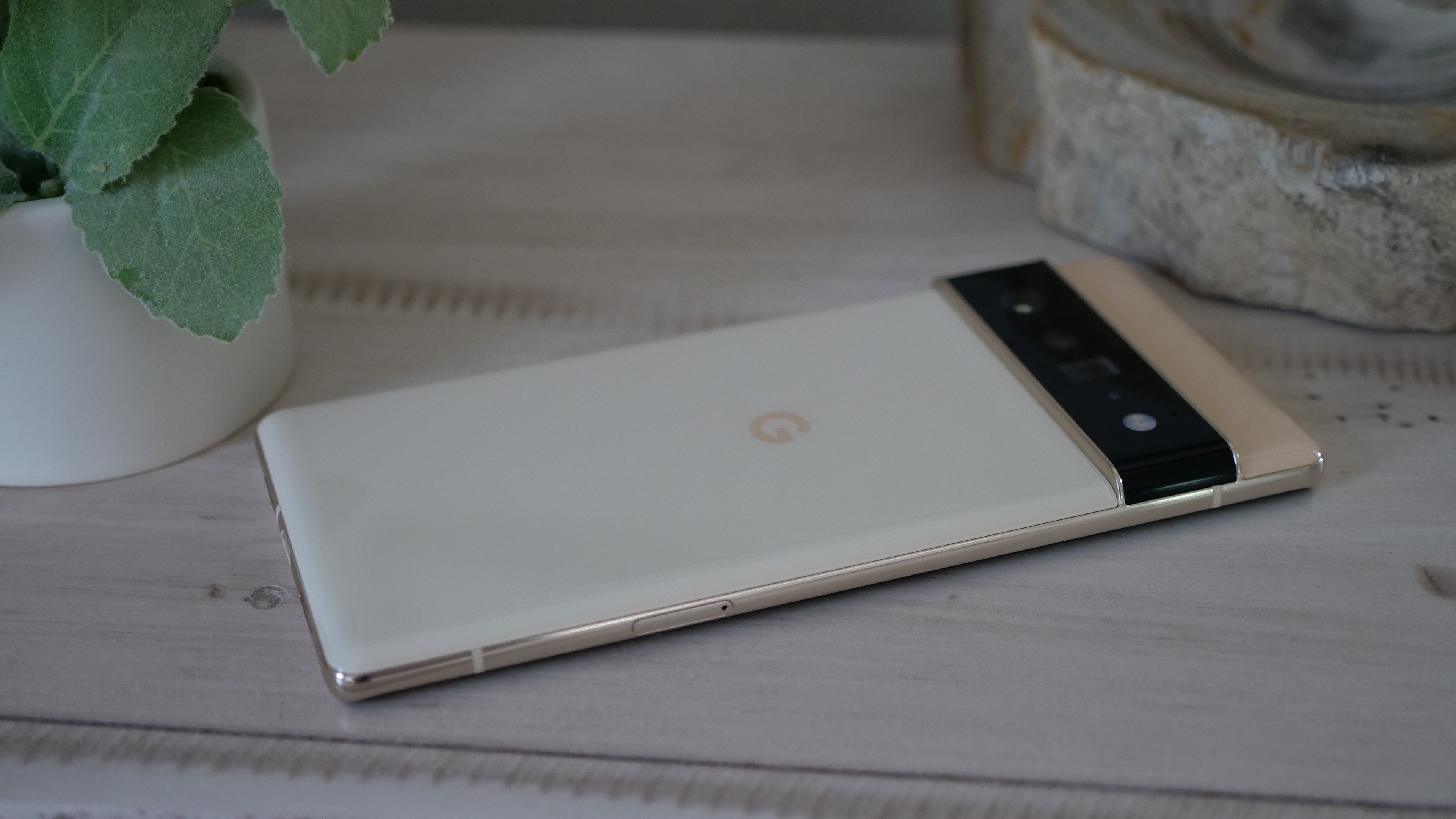
Pixel 6 Pro design
Just like the Pixel 6, the Pixel 6 Pro is going to draw love and hate, and not many emotions in between. This is a welcome change for Pixel design, which has lacked any character over the years. There have been Pixels (and before that Nexus) devices that were better looking than others, but nothing struck as the defining Google phone look. Google has finally found that with the Pixel 6 and Pixel 6 Pro.
While not all Pixel fans are sold on the size of the Pixel 6, the Pixel 6 Pro is unapologetically large, and that’s alright. At 6.5 x 3.0 x .035 inches and 7.4 ounces, the Pixel 6 Pro fits a 6.7-inch display and sizes up well with the giants from Apple and Samsung.
The iPhone 13 Pro Max (6.3 x 3.1 x 0.3, 8.5 ounces) is a bit shorter but wider than the Pixel 6 Pro and noticeably heavier. The Galaxy S21 Ultra, on the other hand, is identical in size to the Pixel 6 Pro, which is impressive given that it has a larger 6.8-inch display. However, Samsung's phone does outweigh the Pixel by over half an ounce at 8.07 ounces.

The rounded back edges and waterfall display edges of the Pixel 6 Pro help make the large phone feel more manageable than the iPhone 13 Pro Max. That said, there is no getting around it: this is a big phone. Longtime Pixel fans are going to have some growing pains as they try to adjust, but you'll feel right at home coming from one of the previous iPhone Max models or any of the larger Samsung Galaxy phones.
The look of the phone is subjective, but that dominant camera array spanning the back and the two-tone finish are the strongest design choices we’ve seen from Google in years. Google’s designers have created a distinct “Pixel look” and I hope they stick to it as the powerful marketing push we are seeing from the company needs to be backed up with a product that is instantly and easily recognizable.
Pixel 6 Pro fans who like more fun color options may be a bit envious of the standard Pixel 6 choices, but on the Pixel 6 Pro, Sorta Sunny, Stormy Black and Cloudy White get the polished alloy frame that wraps the camera array and edges of the phone for a more premium look. If you want more color, Google also has a variety of case options that are slightly translucent and create some interesting hue combinations.
Pixel 6 Pro offers IP68 dust and water resistance certification, which should help it hold up to the rigors of daily life. Corning Gorilla Glass Victus protects the front and back of the Pixel 6 Pro, which should keep the phone safe from the occasional scrape, bump or drop.
The Pixel 6 Pro keeps things minimal when it comes to ports or buttons. There is a single USB-C port at the bottom and the power and volume up and down are on the right side.
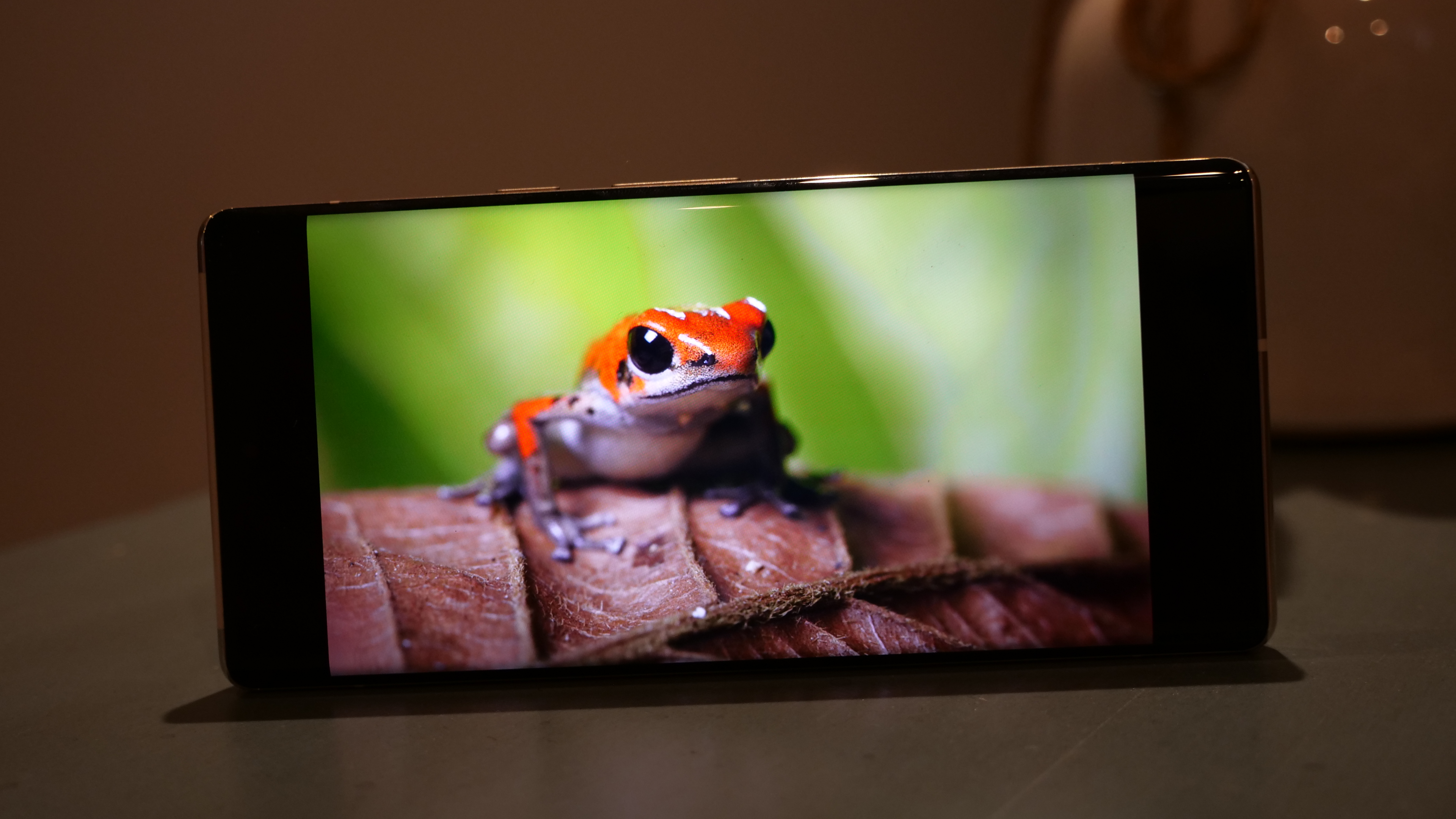
Pixel 6 Pro display
The Pixel 6 Pro display breaks new ground for Pixel. At 6.7 inches, it is 0.4 inches larger than the previous high-water mark for Pixel flagships, the Pixel 4 XL. This phone stands eye-to-eye with rivals like the iPhone 13 Pro Max, but does it hold up on more than size alone?
The Pixel 6 Pro features a QHD+ (3120x1440 pixel) LTPO OLED with Google’s Smooth Display offering up to a 120Hz refresh rate. Like the iPhone 13 Pro Max and Galaxy S21 Ultra, it uses an LTPO OLED to adjust its refresh rate from 10Hz to 120Hz depending on the content on the screen. Like this year’s iPhone, this is the first Pixel to offer 120Hz and Google is jumping in with both feet by also offering a highly variable refresh rate.
I turned to Life in Color with David Attenborough and watched some of the “Chasing Color” episodes to test out the display. A poison dart frog resting on a leaf offered an excellent impression of what the display is capable of. The vibrant red of the frog popped against the green background, while the fine details on the leaf below it showed the high-density resolution of the display.
Our lab testing was a mixed bag for the Pixel 6 Pro with the phone reproducing 73.8% of the DCI-P3 color gamut in its Natural color setting. The iPhone 13 Pro Max (77%) and Galaxy S21 Ultra (81.4%) both eclipsed that mark, but as with other Android phones, you have the option to switch to a boosted color mode for a more saturated look.
The Delta-E color accuracy test results (lower is better) were weaker for the Pixel 6 Pro at 0.3. That was considerably worse than the iPhone 13 Pro Max (0.21), but superior to the Galaxy S21 Ultra (0.35).
The Pixel 6 Pro crushed our brightness test with a peak of 842 nits. This outdid even the iPhone 13 Pro Max (837 nits), which Apple proudly boasted was its brightest display ever and bests the Galaxy S21 Ultra (821 nits) as well. All three are perfectly visible even in full sunlight, but it’s impressive for Google nonetheless.

Pixel 6 Pro cameras
The Pixel 6 Pro is by far the most impressive array of cameras a Pixel or Nexus phone has ever offered. I don’t mean that in the “this is the best phone we’ve ever made” sense that companies like to use. Rather this is the strongest ever offering from Google when looking at what else is on the market.
It starts with the wide-angle primary 50MP Octa PD Quad Bayer with its f/1.85 aperture and a 1.2µm pixel width. The new sensor is 1/1.31”, one of the largest in any smartphone on the market. The 12MP ultra-wide is a more incremental upgrade, but the larger 1.25µm pixel width, f/2.2 aperture, and wider 114-degree field of view still yield better results than its predecessor.
Finally, the Pixel 6 Pro adds a third lens for the first time on a Pixel phone. The new 4x optical telephoto lens of the Pixel 6 Pro offers an impressive 48MP, nearly matching the primary lens. However, it doesn’t match that sensor in other regards given the 0.8µm pixel width, f/3.5 aperture, and half-inch image sensor size With Google’s Super Res zoom, it delivers usable results up to its full 20x digital zoom range.
That’s just one example of where Google’s computational photography has lost nothing in its transition to these new sensors. There are areas where the iPhone 13 Pro Max and the Galaxy S21 Ultra enjoy an edge over the Pixel 6 Pro, but Google is back in the discussion for the best phone camera for stills.
Wide-angle camera
The updated primary sensor changes everything for the Pixel 6 Pro because the software isn’t trying to overcome hardware limitations anymore. The two biggest areas where you will see improvements are low-light, where the much larger sensor and pixel binning tech give a boost to Google’s already stellar Night Sight, and the higher megapixel count, which lets you crop for details that would have been lost on the aging 12MP sensor in the Pixel 5.
I captured the photo of a witch figurine below with minimal light coming from a neighboring room. Yes, the Pixel 5 could have captured this photo, but at a much slower speed that would've required my hands to stay still for longer. On the Pixel 6 Pro, you can grab group photos with Night Sight, which would have been essentially a futile effort in the past. Even if someone does move a bit, Face Unblur, a new software feature in Google Photos, might help you out.

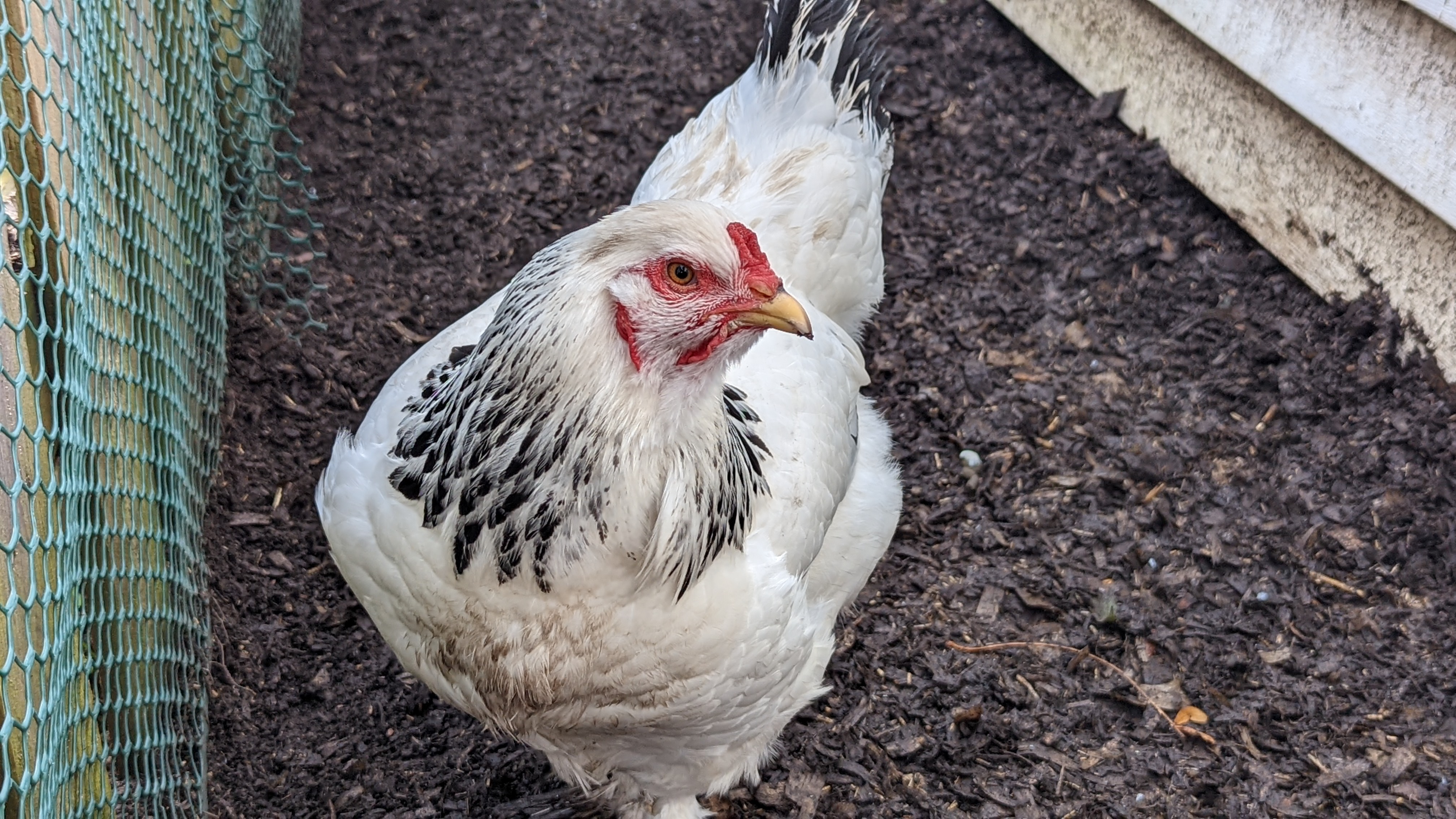



Ultra-wide camera
The ultra-wide hardware is impressive but only marginally better, which is disappointing when you look at what Apple did with the iPhone 13 Pro and iPhone 13 Pro Max ultra-wide this year.
The biggest update Google made for the ultra-wide lens this year comes in the software with the new Magic Eraser tool in Google Photos. This is basically a one-touch Photoshop to eliminate any unwanted people or objects from your photos. I am still blown away by how well this works right out of the gate. While I have done this for years with Photoshop, Magic Erase requires just a quick tap or swipe of your finger and poof, whatever you highlighted is gone.


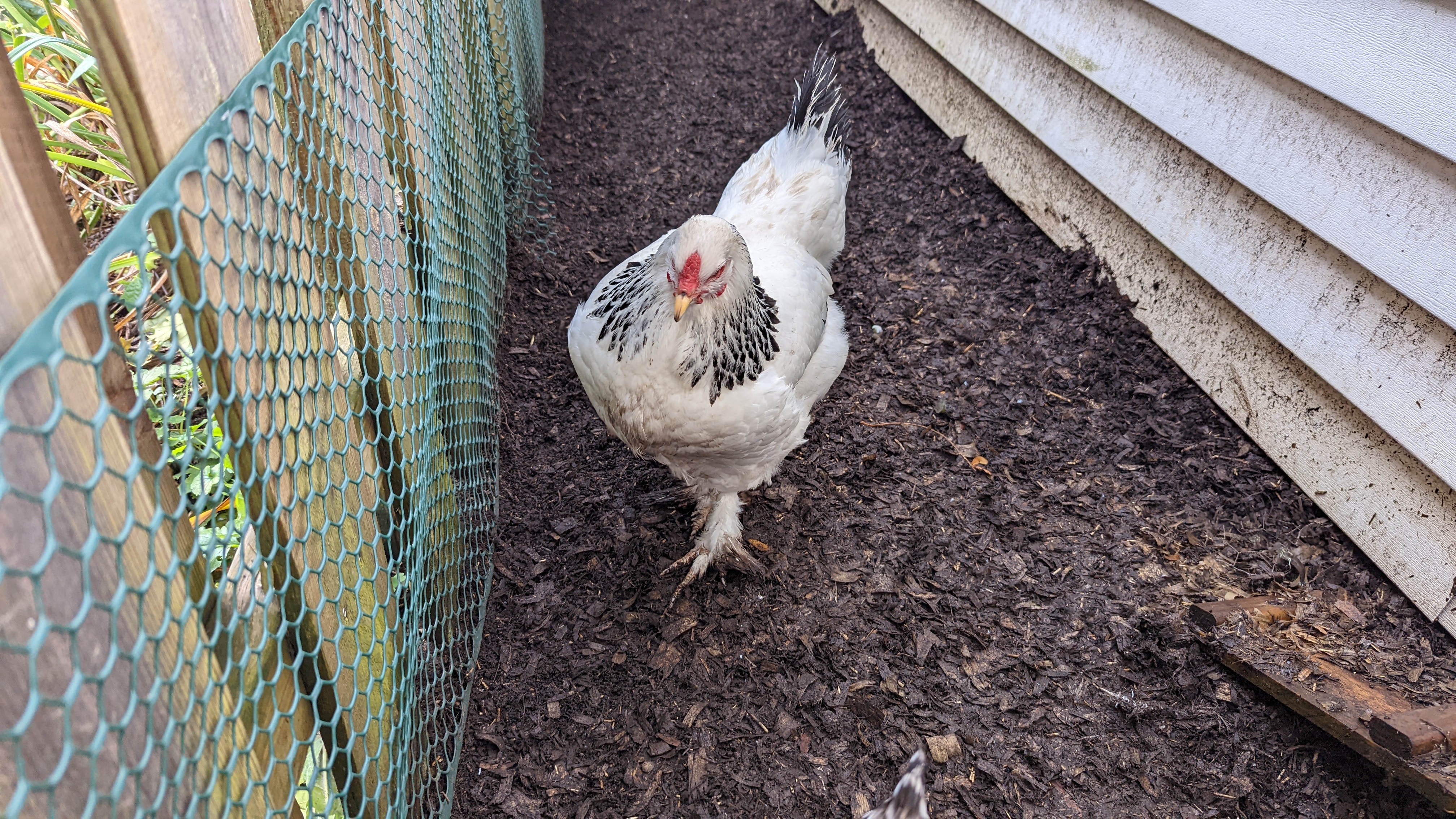
Telephoto camera
The Pixel 6 Pro's 48MP telephoto is certainly an impressive addition, but it will be interesting to see how many are swayed by this feature. I’m a big fan of having a telephoto lens on my smartphones to capture photos and videos of wildlife and my kids when they are playing sports or just running around at the park.
It’s a powerful tool in your mobile photo arsenal and, as you can see, the Pixel 6 Pro delivers excellent results through its full 4x optical to 20x digital zoom.


Front-facing camera
The front-facing camera on the Pixel 6 Pro has a slightly weaker f/2.2 aperture versus the Pixel 6, but makes up for it with larger 1.22um pixels, an 11.1MP resolution and a wider 94-degree field of view that lets you either add more of your background or to get an extra person or two into a group selfie.
Google’s portrait mode is still among the best with nice bokeh and the ability to apply different lighting to your scene. It falls just shy of the iPhone 13 Pro Max, but comes close.

Video
Google continues to lag behind when it comes to video, and the gap is widening given the improvements Apple made this year. There’s nothing wrong with the basic video capture from the Pixel; it's capable of 4K or 1080p at 30 or 60fps. The Pixel 6 Pro has one edge on the Pixel 6 here and that is for front-facing camera video, which is up to 4K rather than 1080p.
The video itself looks good, and benefits from the improvements to the camera sensors. However, those are all pretty much table stakes for a modern smartphone. Some of the new image stabilization options like Cinematic Pan and more unique options like the astrophotography timelapse are interesting, but Google fails to make them as accessible as Apple. For capturing family videos, the Pixel 6 Pro is up to the task, but for most creators, this remains a weak point for the Pixel lineup.
Pixel 6 Pro performance and graphics
Despite the excitement over the new camera sensors, Google’s custom Tensor chip that is powering the Pixel 6 Pro is by far the biggest change this year and the biggest long-term bet that Google has ever made on its hardware. As such it probably shouldn’t be surprising that it may be some time before we feely grasp the capabilities of Tensor, but my first week with it has been encouraging.
Google said the Pixel 6 and Pixel 6 Pro are the fastest Pixels ever and given that last year’s Pixel 5 was an upper mid-tier phone and the last “flagship” Pixel was using a Snapdragon processor from 2018, it isn’t a claim that really warrants celebration.
However, after years of research and development on Tensor, I won’t fault Google for a little bit of meaningless event speak about it. The real story of Tensor is the focus on superior performance through advanced on-device AI for faster and better speech recognition and improved image processing.
Putting the Pixel 6 Pro through my typical challenges for phones includes loading up a couple of dozen Google Chrome tabs, running a Netflix video in the background, and then swapping between several other apps including Twitter, YouTube Music, and Gmail. This was all well within the capabilities of the Pixel 6 Pro and Tensor, I never ran into any hiccups in the video or delays in the 120Hz animations as I swiped apps in and out of position.
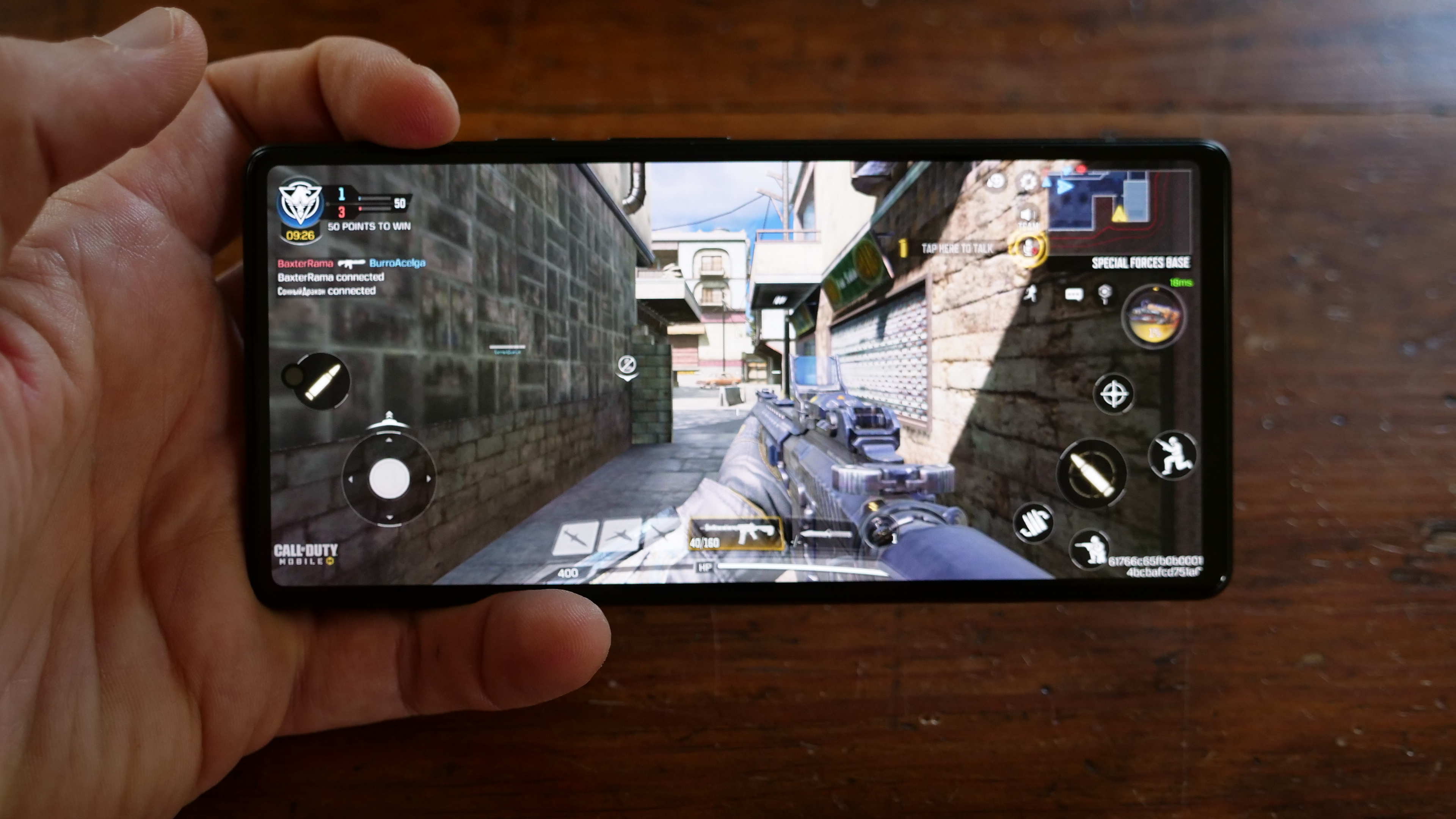
That 6.7-inch QHD+ display with a 120Hz refresh rate should make this an ideal gaming phone if Tensor can push all those pixels around and after a few rounds of Call of Duty Mobile, I feel pretty confident that it will get the job done. With the graphics and refresh rate in their “very high” settings, the game continued to run smoothly. I’ve discussed in a number of recent flagship phone reviews that the overhead with current processors exceeds the actual performance needs that we have right now and the Pixel 6 Pro may be solid proof of that.
Looking at our performance benchmark tests, the Geekbench 5 score won’t impress any current flagship owners with the Pixel 6 Pro achieving a multi-core score of 2,760. That is almost comically far behind the iPhone 13 Pro Max (4,549) and even the Galaxy S21 Ultra (3,440) with its nearly year-old Snapdragon 888 processor is considerably faster.
Graphics and real-world benchmarking are more favorable for the Pixel 6 Pro. In the Wild Life Unlimited graphics test, the Pixel 6 Pro managed 40 frames per second, pretty handily beating the Galaxy S21 Ultra (34fps), but of course, it wasn’t enough to beat the iPhone 13 Pro Max (68fps).
In our Adobe Premiere Rush test that has the phone convert a 4K video to 1080p, the Pixel 6 Pro again delivered one of the best results we’ve seen from an Android phone. It converted the video in 48 seconds, which is 15 seconds faster than the Galaxy S21 Ultra and while the iPhone 13 Pro Max (25 seconds) claimed another decisive victory, that doesn’t take away from the Pixel 6 Pro’s result.
With Google seeming to target different performance priorities than we commonly see among Android phones and able to tune the operating itself to fit that vision, it will be interesting to see the result of that over time, but for now the Pixel 6 Pro delivers fast enough performance for anything that we could throw at it.

Pixel 6 Pro battery life and charging
With a 5003mAh battery, the Pixel 6 Pro has easily the largest battery that we’ve seen in a Pixel phone, not shocking for the largest Pixel phone ever, but still notable for a company that historically came up short with its batteries.
Google claims this will be enough to deliver “Beyond 24-hour battery life” and up to 48-hours of battery life if you use Extreme Battery Saver. Our real-world and lab tests offer conflicting takes on this.
Our Laptop Mag Battery test has the phone continuously surf the web over cellular with the display set to 150 nits of brightness, the Pixel 6 Pro averaged only 7 hours and 43 minutes on this test. That is distantly behind the iPhone 13 Pro Max (12:16) and the Galaxy S21 Ultra (11:25).
My normal review review day with the phone was not a problem though. This usually means running from around 7:30 a.m. to 10:30 p.m. with two hours of Netflix and/or YouTube streaming on Wi-Fi, web browsing, using social media, gaming for about 30 minutes and capturing photos and videos. I even pushed it quite a bit harder than this on a couple of days and was still left with at least 15% remaining by the time I plugged the phone in for the night.
Google’s adaptive battery management with Tensor is meant to try to optimize for your usage and I’m just not sure whether it is handling our standard testing properly. I’ll be doing more stress testing of the battery over the coming weeks and will update this review with my findings.
Charging gets a much less murky improvement with support for up to 30W fast charging. Google doesn’t include the necessary charger in the box, but you just need any 30W USB-C charger with USB-PD 3.0 support in order to enjoy those new speeds. Google indicates that this will get you to a 50% charge in about 30 minutes and I was able to hit exactly that mark using my OnePlus Warp Charger 65W, which offers the necessary compatibility.
Pixel 6 Pro also supports Qi wireless charging, fast wireless charging, and battery share if you have a pair of wireless headphones or a Qi-compatible smartwatch that you need to top up on the go.
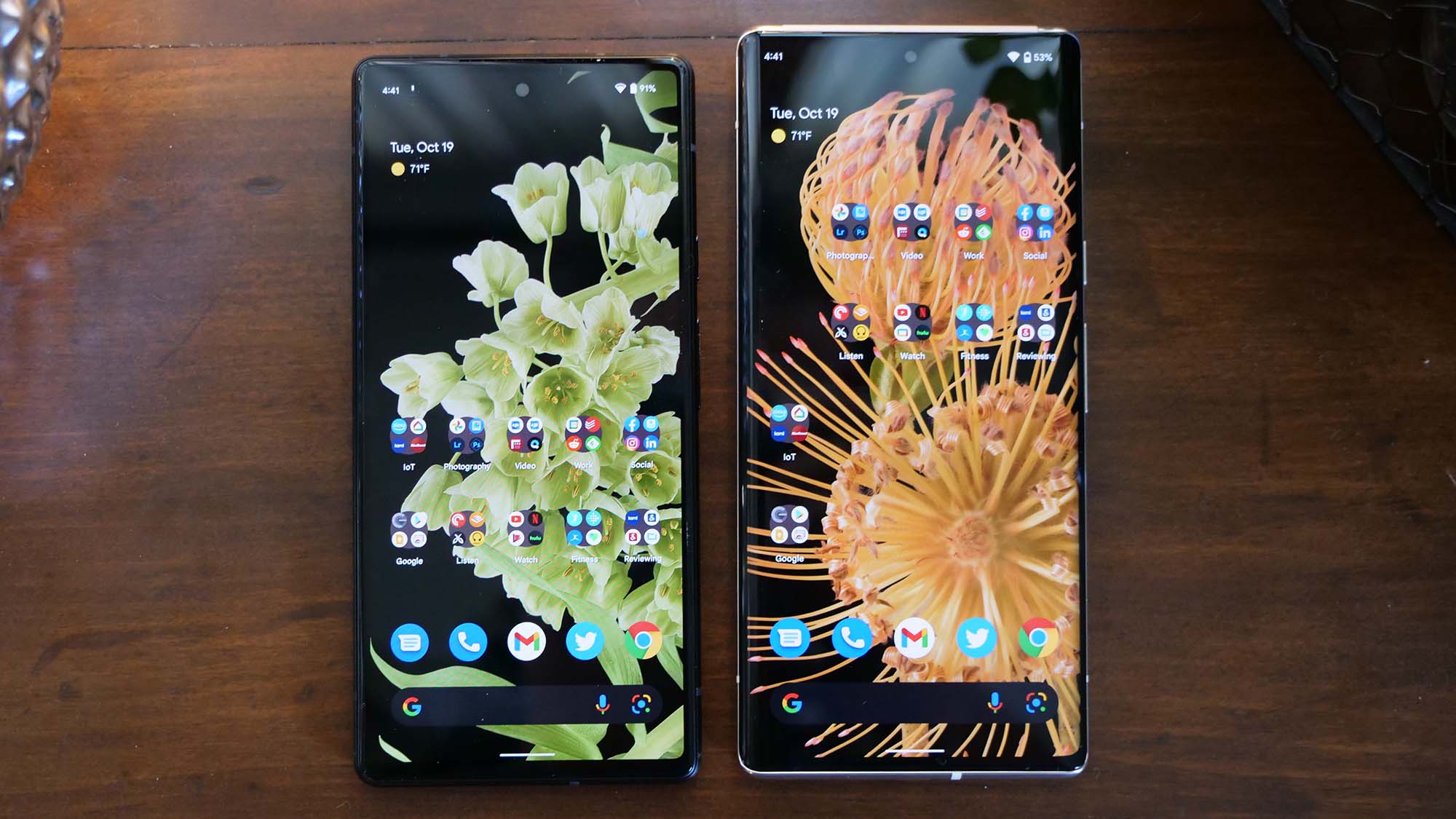
Pixel 6 Pro software
The Pixel 6 Pro runs Google’s slightly modified version of Android 12. Our review of the updated OS will give you a detailed look at the updated user experience and user interface, but the Pixel 6 gives you even more. It’s something Google is finally playing up more with its Pixel marketing in referencing the regular “feature drops.”
While some of these features are legitimately quite useful, it’s the enhanced software support that should rightfully get the most attention. Google will now offer five years of security updates for the Pixel, nearly matching the six years that Apple typically provides. While it still comes up shy when it comes to major OS updates, sticking to three years there, so many Android feature updates are not tied to the OS itself that the comparison doesn’t really hold up to scrutiny.
The Pixel 6 Pro can take some of the pain out of calling businesses with its Wait Times, Direct my Call and Hold for Me features. These show you optimal times to call a particular business, transcribe automated menu options for you, and notify you when someone picks up your call after putting you on hold. I’ve used Google’s call screening on my Pixels since it first became available and have come to really miss these touches when I’m using other devices.
If you like going hands-free with your phone the improved Assistant voice typing should be a boon for you. Now you can just say, “Hey Google, type” when you are in a messaging app, and it will let you dictate and send messages including precise cursor movement, spelling out unusual words or names, and emoji.
Live Translate is more impressive than ever with the ability to translate messages (11 languages) or media (5 languages) on your phone in real-time. The camera mode using Google Lens will translate anything it sees in 55 languages offline and 104 languages when online. Using Interpreter Mode, Assistant will translate back and forth for you in up to 48 languages online.
Google’s robust at a glance feature is also more powerful than ever and it will try to show you contextually relevant information on your home screen and lock screen. This includes weather, local alerts, travel details that it pulls from your email, appointments, and traffic to relevant destinations. These are all under that same umbrella of Pixel trying to be smart enough to show you what you need to know without your ever having to ask for it and Google almost inarguably does it better than anyone else with Pixel.

Bottom line
At $899 the Pixel 6 Pro is affordable compared to its flagship competitors, but it isn’t the immediately obvious value that the Pixel 6 represents.
The unproven Tensor chip may be tough for users that only upgrade every few years to depend on its first-gen, particularly with a proven commodity like the A15 Bionic in the iPhone 13 Pro Max. While I’ve been thrilled with the photos that I’ve gotten from the Pixel 6 Pro, there was certainly room to worry about whether Google could pull off its magic with a new set of sensors too.
While its raw numbers may not hold up to its competitors, Google’s entire pitch for the Pixel 6 and Pixel 6 Pro essentially boils down to it being a phone that adapts to you. I’ll be continuing to work with both phones as I love what I’ve seen so far and while it may not be envisioned when I asked for a flagship Pixel phone, it’s exactly what I wanted.
Sean Riley has been covering tech professionally for over a decade now. Most of that time was as a freelancer covering varied topics including phones, wearables, tablets, smart home devices, laptops, AR, VR, mobile payments, fintech, and more. Sean is the resident mobile expert at Laptop Mag, specializing in phones and wearables, you'll find plenty of news, reviews, how-to, and opinion pieces on these subjects from him here. But Laptop Mag has also proven a perfect fit for that broad range of interests with reviews and news on the latest laptops, VR games, and computer accessories along with coverage on everything from NFTs to cybersecurity and more.


